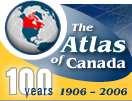|
Over the years, ethnic diversity has given way to the linguistic
duality. The two major ethnic groups represented more than 90% of
the population in 1871; in 1996, 90% of the population speaks French
or English most often in the home. However, this permanence masks
the very different evolution experienced by English - and French
- speaking communities across the country.
Today, in Canada, two large official languages groups represent
about 83% of the population. There are also numerous other language
groups, none of which represents more than three percent of Canadians.
Both geography - 5500 kilometres (3400 miles) from coast to coast
- and history play an important role in understanding the present
language situation.
If we look at Canadians as a whole, we find that the language that
most (84%) of them can speak is English, followed by French which
about one-third (31%) of the population can speak. About one in
six Canadians (17%) speak both official languages according to the
1996 Census. Those who live in areas where the two languages groups
are in close proximity have a far greater tendency to speak both
English and French. For example, half of the population in the Montréal
metropolitan area and 44% of the population of Ottawa-Hull can speak
two official languages.
The text for Official Languages is based on the following
publication:
Marmen, Louise and Jean-Pierre Corbeil. Languages in Canada:
1996 Census. New Canadian Perspectives Series. Ottawa: Canadian
Heritage, and Statistics Canada, 1999. Catalogue number: CH3-2-8/1999.
To properly interpret these maps, please consult the text Data
and Mapping Notes.
|
